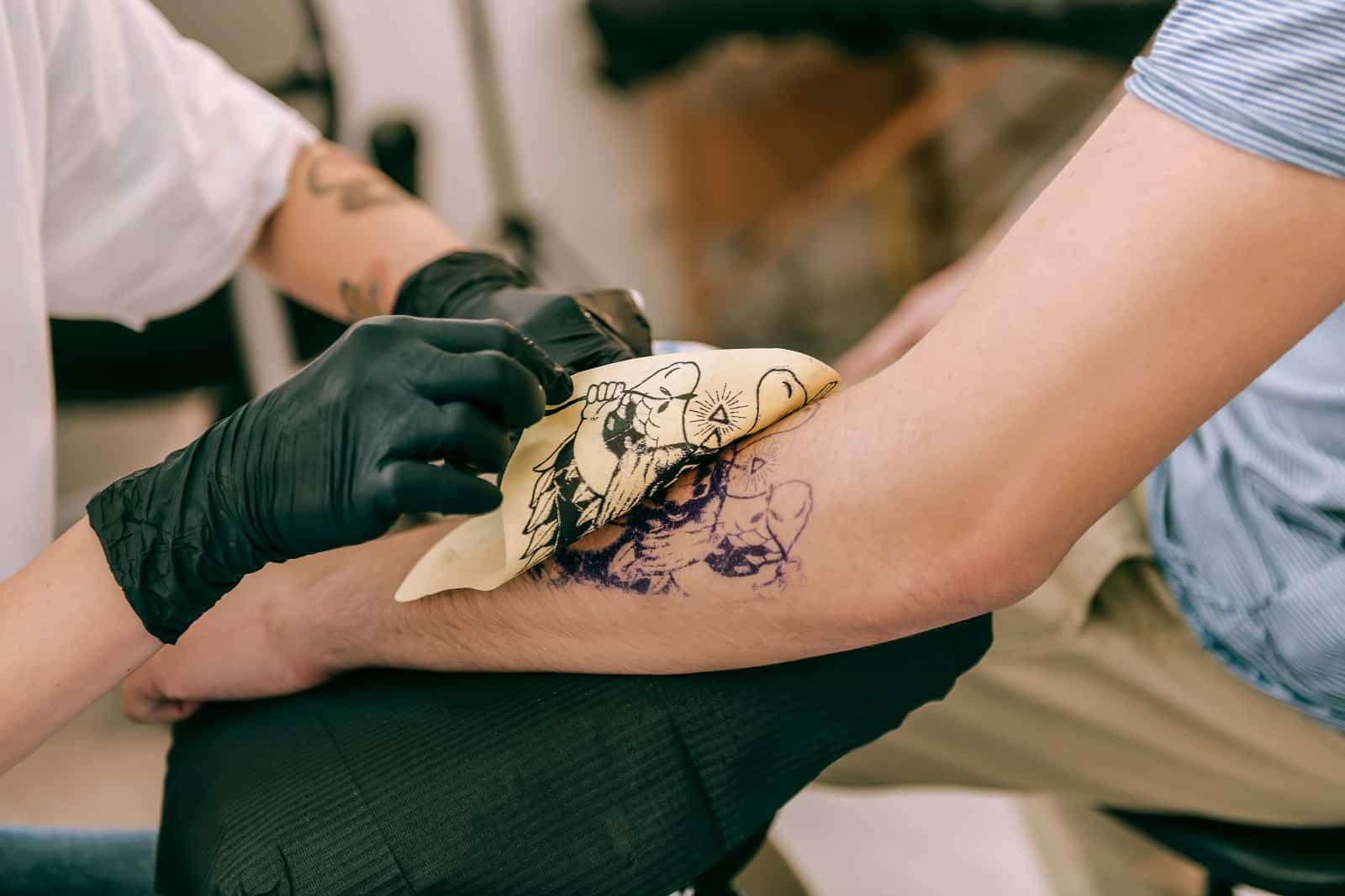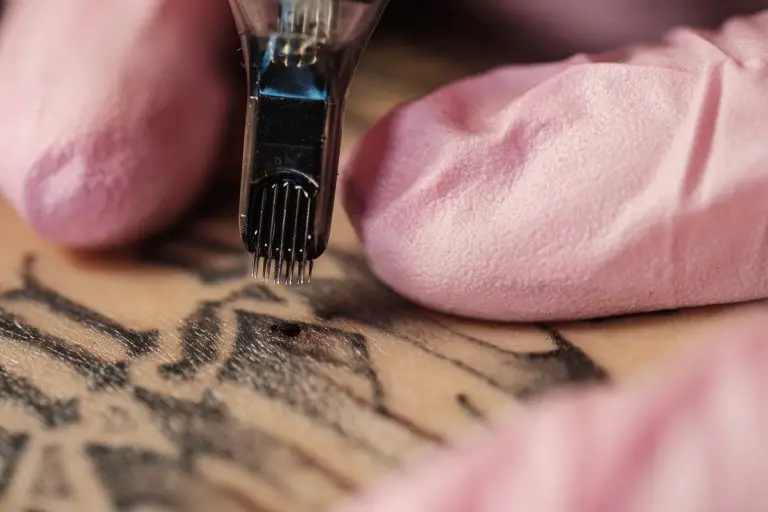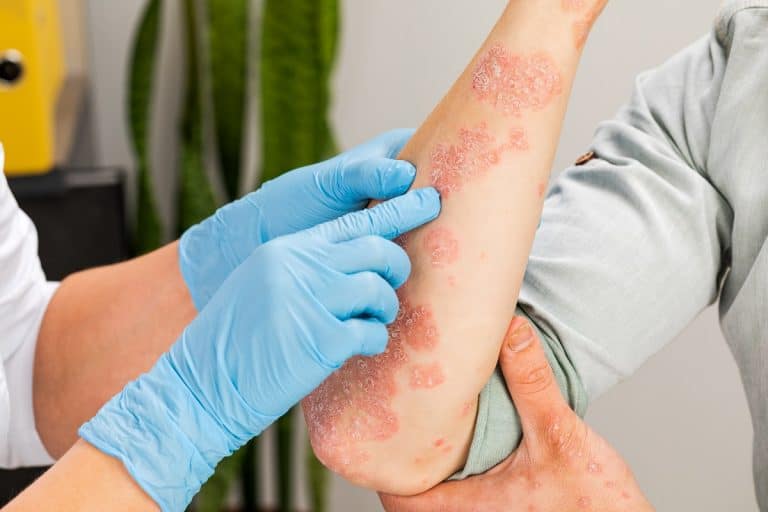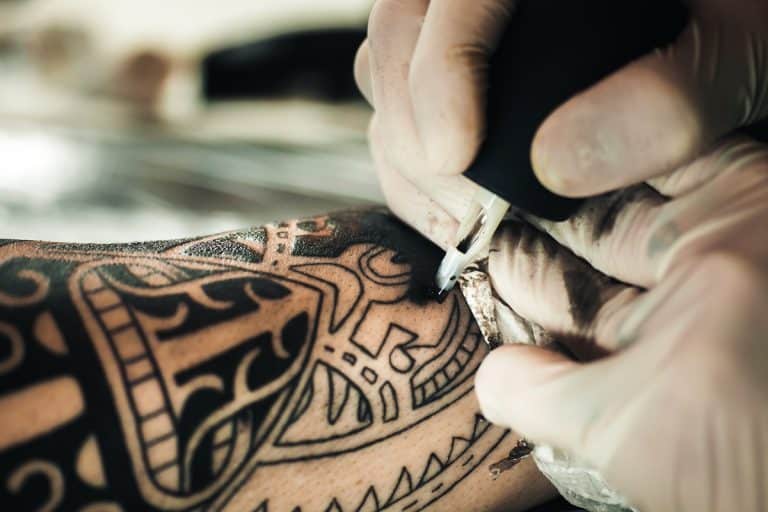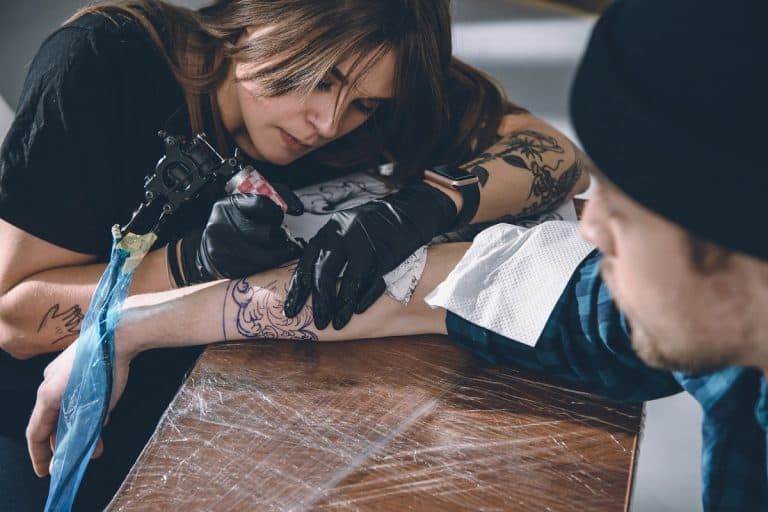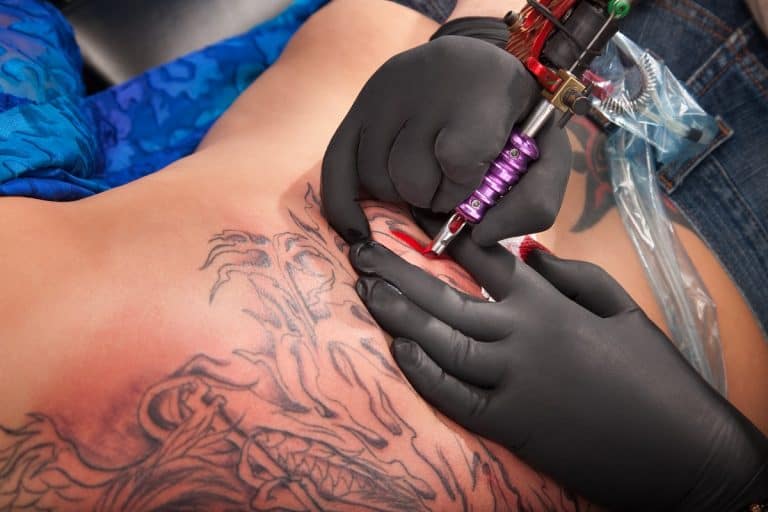Tattoo Aftercare instructions: Day by Day Ultimate Guide (2024 Updated)
If you thought that enduring the pain of tattooing is all it takes to get an amazing tattoo, then you must have forgotten the healing and aftercare part! Taking care of a tattoo until it heals is one of the most important steps if you want the tattoo to turn out great and not become infected.
So, if you’ve just received some fresh ink, or you’re thinking about getting a tattoo, then the following guide is mandatory for you to read and remember. So, without further ado, let’s show you how to take care of your new tattoo and prevent infection. But remember; your tattoo will heal as good as the tattoo artist is!
Contents
- Day by Day Tattoo Aftercare
- Eyebrow, Eyeliner and Lip Tattoo Aftercare
- Why Tattoo Aftercare Matters
- Important Tattoo Aftercare Tips
- Tips to Make Your Tattoo Heal Faster
- How to Shower with a New Tattoo
- 6 Best Tattoo Aftercare Products
- What to Do If Your Tattoo Gets Infected
- Summary
- FAQs
Tattoo Aftercare Day by Day: Instructions Sheet
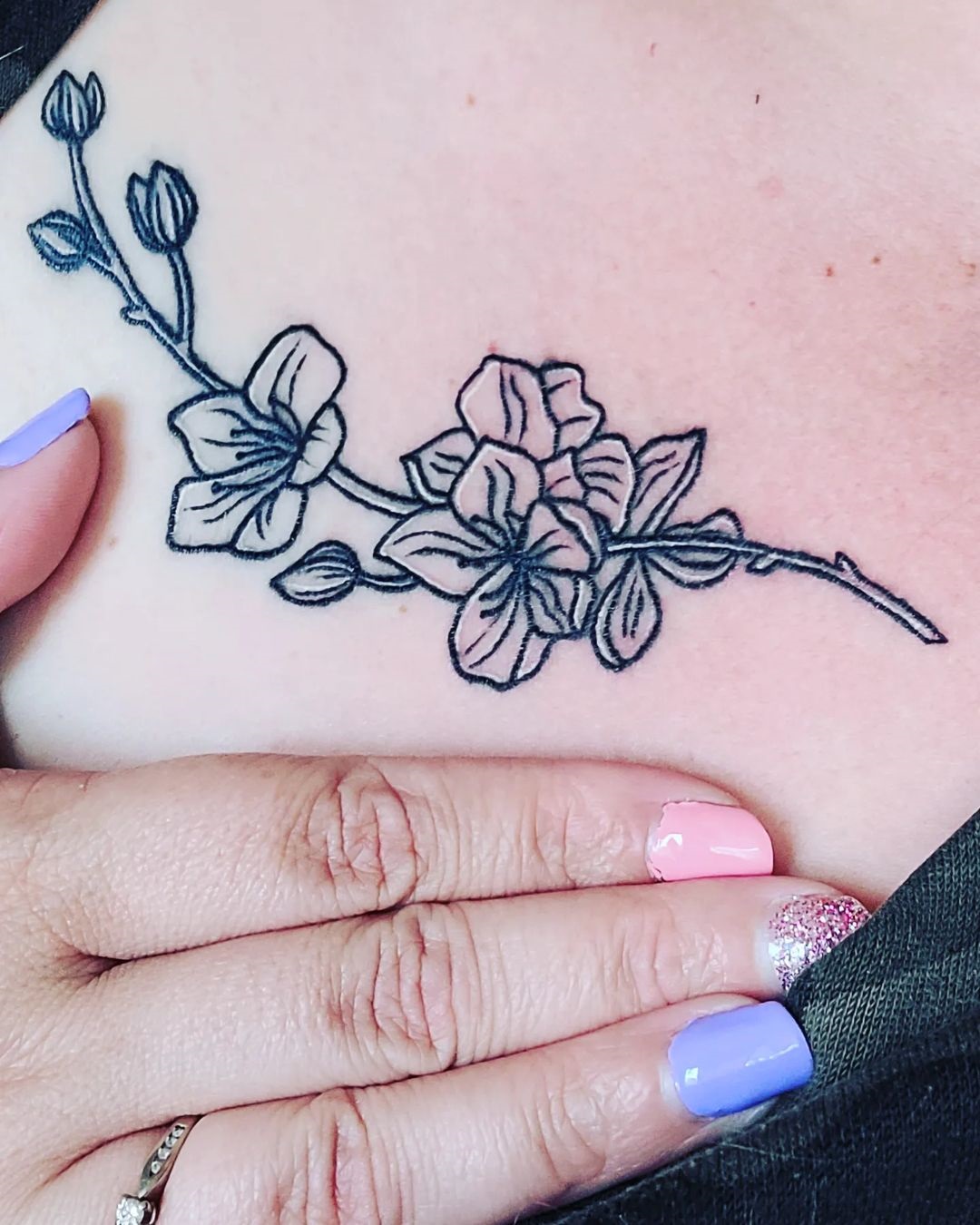
Before we delve into our list, we highly recommend that you ask your tattoo artist what they recommend for your tattoo aftercare. Not only will they have expert knowledge, but they’ll also be able to give bespoke advice if you have a tattoo in an awkward location.
Furthermore, your tattoo artist will be able to gauge how quickly you will heal better than any online guide, simply because they have first-hand experience tattooing your skin and seeing how your body is responding!
If, for whatever reason, your tattoo artist doesn’t provide you with clear and simple instructions, just follow these steps instead. Make sure you bookmark this page so you can come back to our tattoo aftercare instructions sheet whenever you need to.
Immediately After Getting a Tattoo
Day 1 – during the first day, your tattoo will be wrapped in plastic and a bandage by the tattoo artist. The tattoo needs to stay covered for several hours (2 to 4 hours on average). After removing the covering, the skin will ooze with plasma and/or blood, and the skin will be red and feel irritated. After cleaning your hands, you should wash the tattoo with antibacterial, fragrance-free soap, and lukewarm water.
It’s important during this stage that you:
- Don’t scrub it with any pressure at all, just let water and soap wash over it,
- Use lukewarm water, not too cold or too hot,
- Don’t place the tattoo directly under a stream of water. Use your hand(s) to gently slosh soapy water over the tattoo to clean it.
When you dry the tattoo, you just want to gently pat it at most. It’s best to use kitchen paper towel, so it can be immediately disposed of.
Wrapping the Tattoo
Although you need to take the plastic off after a few hours to clean the tattoo, it makes sense to want to wrap it again afterward!
It’s always best to let your tattoo breathe in fresh clean air where possible, but if your tattoo is going to be exposed to sunlight or rub against fabric clothing, then wrapping it will protect it. Use a protective and breathable tattoo film.
During Those First Days
Days 2 to 3 – continue washing the tattoo daily, following the steps for day 1. When the tattoo scabs over and stops oozing, don’t cover it with plastic wrap. Usually at this point you don’t need to moisturize the tattooed area; instead, let the tattoo and skin dry naturally. Since a fresh tattoo is a fresh open wound, you don’t want to be putting creams and lotions on it (this might extend the healing process).
During these days, the ink is still fresh, so you may notice some excess ink draining away when washing the tattoo. You can wash the tattoo 2 to 3 times a day if it needs it. But try not to go overboard!
You will notice some scabs forming and the tattoo becoming duller in appearance. These are signs that your skin is healing. Once your scabs are full formed, toward the end of the week, you can start applying moisturizer and/or ointment, if directed to by the tattoo artist.
Day 7 – the scabs will surely start to form by now, so you need to refrain from picking them. If you do pick the scabs, the skin will end up scarred, and we don’t want that. It can actually warp the tattoo design!
You will still need to properly wash and clean the tattoo, at least once or twice a week. It is essential you moisturize the tattoo at this point too, but don’t aggravate or over wash it. See our recommendations for tattoo moisturizer below – it’s important that you use some to prevent the tattoo drying out.
Applying Ointment, Balm, or Moisturizer
The key is to apply a small amount and spread it evenly. It should coat the tattoo but also be absorbed quickly. If you apply your product and there’s still streaks of moisture across the tattoo, that’s a sign that you’ve used too much.
We’d go so far as to say that you should use too little! Apply only a small amount – just enough to cover the tattoo completely – because you can always add another thin coat later, if it starts to itch or feel dry. It’s easier to add more moisture than take it away.
Also Read: 6 Best Healing & Aftercare Ointment For Tattoos (Natural Ingredients, Suitable For All Skin Types)
During Those First Weeks
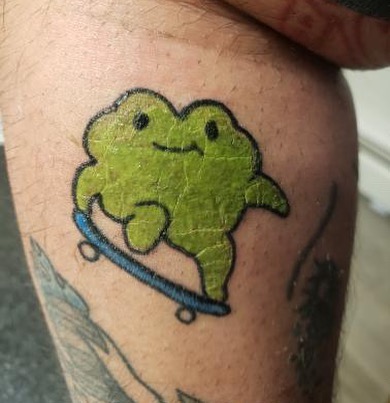
Day 14 – the formed scabs will start to come off at this point, but you still shouldn’t pick them. Let them come off naturally. You will start to experience extreme skin itchiness, so it is essential to stay calm and refrain from scratching the tattoo. You can use a balm or moisturizer to mitigate the itching – most contain ingredients that are designed to stop the itching naturally.
By now, if your tattoo and the skin surrounding it is red, sore, and warm to touch, make sure to contact your tattoo artist or your doctor. These are signs of an infection, along with more obvious signs such as oozing pus and a bad odor.
During That First Month
Days 20 to 30 – at this point, the tattoo is still healing, but the scabs should be gone, and the skin is no longer flaky. You still need to keep washing and moisturizing the tattooed area, even if the itching and dryness is gone. This will ensure it heals completely and looks good!
Keeping a tattoo moisturized is actually a key way to keep it looking bright and sharp.
3 months – by now, the tattoo should be completely healed, including all the tattoo and skin layers beneath/around it. It should look bright and vivid, not dull and cloudy in appearance. If there’s some part of the design that doesn’t look quite right, then don’t panic. Having touch-up sessions is quite common and your original tattoo artist can arrange this easily.
Extra Tips for Eyebrow, Lip, and Eyeliner Tattoo Aftercare
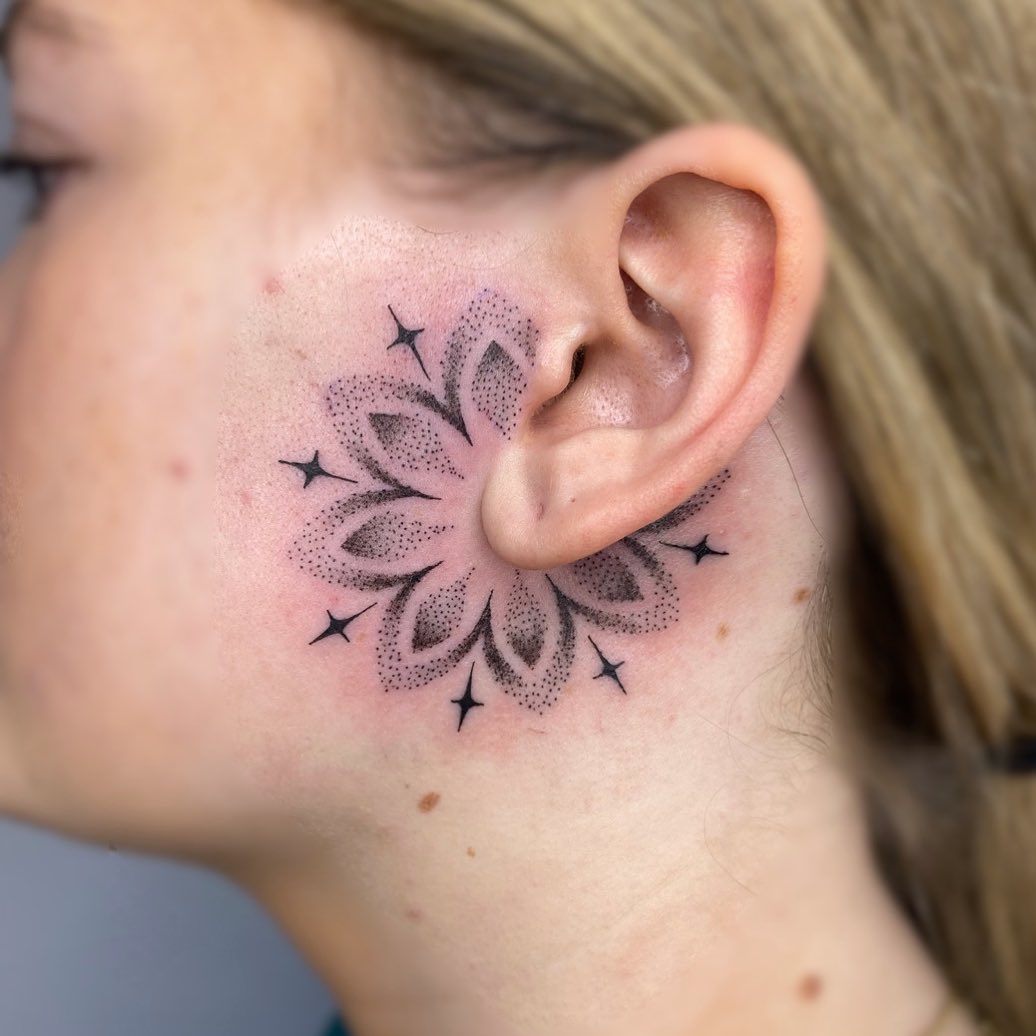
Tattoos on your facial area require a little more care. Your face is a very sensitive area and it’s also the most exposed area of skin, with direct exposure to UV rays from sunlight, pollution, and the elements.
You’ll also be more likely to unconsciously touch your face and the tattoo area during the day, but this can be detrimental to the healing process. So, follow these extra tips:
- Stay indoors as much as possible during those early days and wear a hat if you go outside, to keep your face in the shade,
- Wash with fragrance-free, alcohol-free, anti-bacterial soap – see product recommendations below,
- Use a light moisturizer, even lighter than one you’d use on your body,
- Don’t pop zits or touch acne, just let them go through their cycle naturally,
- Don’t apply any acne-targeting skincare products (face wash, serum, or cream) as the astringent ingredients can lighten and discolor your tattoos,
- Choose a natural sunscreen that’s low in chemicals but high in SPF protection. You need SPF 35 as a minimum but if you can find a light SPF 50 lotion, use that instead.
With tattoos on your face, it’s important that you use a face-care routine that’s suitable for your ink. Any skincare product that’s loaded with chemicals, exfoliates, or is thick and heavy will be unsuitable for your skin. The last thing you want to do is clog pores and cause acne or disrupt the ink and speed up the fading process!
Note: as much as we try to keep our face tattoos looking bright and vibrant, they will naturally fade faster than other tattoos over time. If you have a tattoo on or inside your lip, it will fade even faster. There’s nothing you can do to stop this, it’s just due to the faster turnover of skin cells. Essentially, your skin regenerates and heals faster on your face and in your mouth than elsewhere on your body!
Why New Tattoo Aftercare is So Important
You might be tempted to skip some of the aftercare steps or look for ways to speed up the healing process. While there are legitimate ways to help your tattoo heal quickly (we’ve listed these in a section below) it’s important to understand why thorough aftercare is needed and why parts of it simply cannot be rushed.
This video shows a tattoo healing naturally. She’s cleaning it regularly, using all the right products, and the tattoo is still oozy at the beginning and scabs over later. This is completely natural. But if you don’t follow aftercare steps, it can quickly turn into a nightmare.
Not only will an infected tattoo be painful, but it will also damage the tattoo design. If you’ve spent thousands of dollars on your new ink, that’s a huge issue!
So, make sure that you always follow correct aftercare steps and don’t skip the washing or moisturizing. It’s also important to not pick at the tattoo.
Here are some other reasons why taking care of the tattoo is essential.
- Tattooing is a medical procedure; the process comprises a needle being inserted repeatedly underneath your skin. Naturally, we can conclude that every medical procedure, as well as tattooing, requires aftercare.
- Because tattooing is a medical procedure, it can cause infections and scarring unless the tattooed region isn’t taken care of.
- Tattoo aftercare prevents skin complications and health issues.
- Tattoo aftercare promotes faster healing and lowers the chances of infection – if you keep touching the tattoo or let it dry out and crack, it will take even longer to heal back to normal.
- Even though some tattoo artists don’t provide aftercare instructions, it is essential you as a client are informed about it before and after you get a tattoo.
Our guide, and Google in general, are your friend. Don’t ever hesitate to ask for advice! Search “is it normal when…” if you are ever unsure about your healing tattoo and the correct way to care for it. You can also ask questions on forums, such as:
Best Tattoo Aftercare Tips
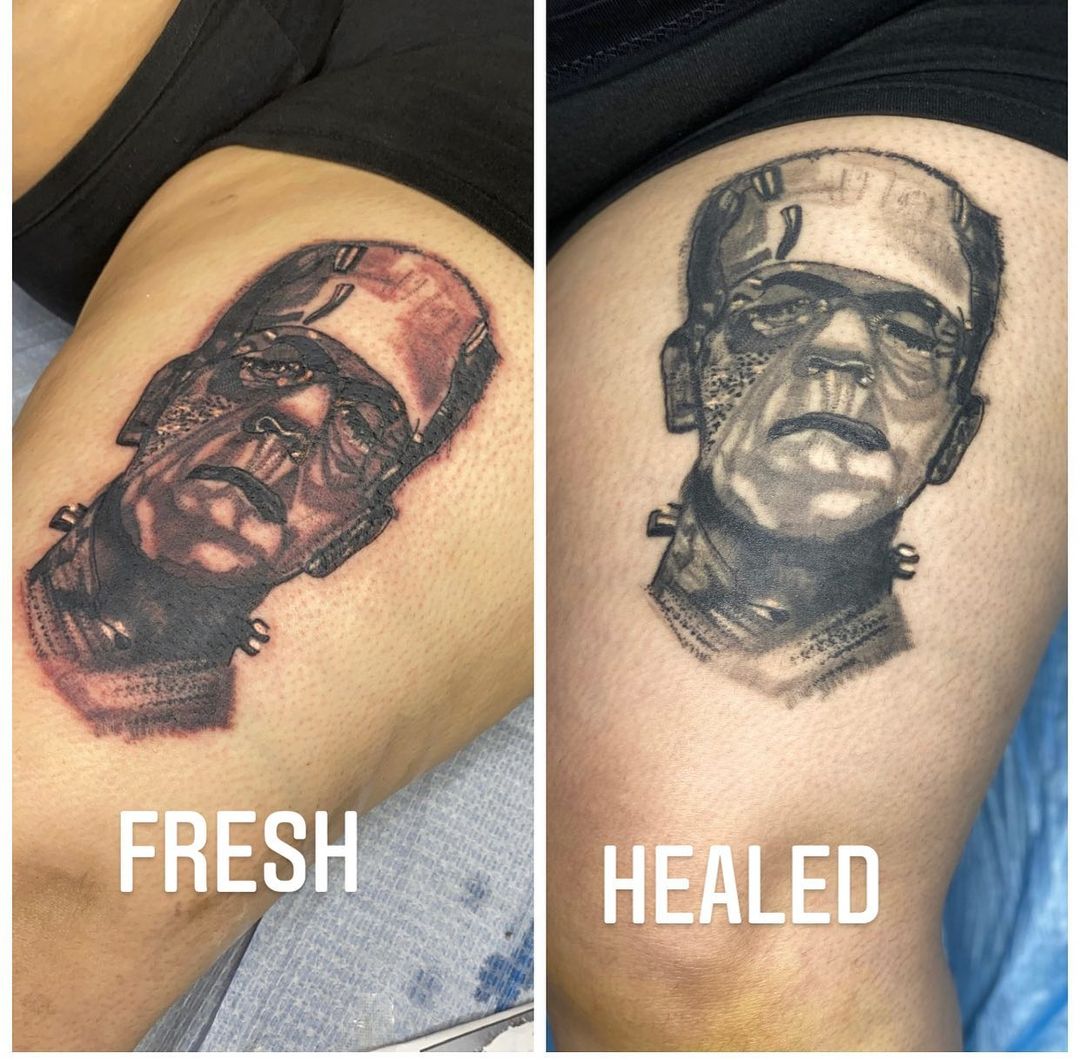
If you need step by step instructions, scroll back up to our day-by-day account of the tattoo aftercare you should be performing. If you need a little extra advice, here are some more detailed tips that we’ve learnt from the world’s most professional tattoo artists.
Let’s start first with the most essential recommendations for tattoo aftercare. The following 4 tips are important for anyone who has just got a tattoo, regardless of its size or style. With new tattoos, it is crucial to be patient and refrain from all sorts of scratching, touching, and picking.
Let’s see how you can take care of the tattoo and mitigate unwanted infections.
1. Only Touch The Tattoo With Clean Hands
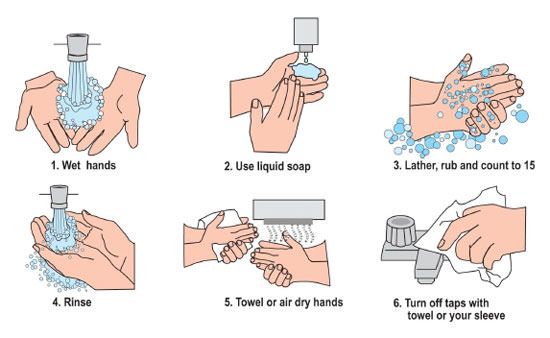
One of the most essential pieces of advice you can get is to never touch your fresh tattoo without washing your hands first. Cleaning your hands will prevent all kinds of bacteria transferring to the irritated and tattooed skin, which would otherwise cause infections and health issues. So, when you want to touch the tattoo or apply ointment, wash your hands for 20 seconds at least using lukewarm water and soap.
You should also wash your hands before touching your soap!
- Wash hands with your favorite hand soap,
- Pick up your tattoo soap and lather it,
- Gently use your hands to wash the tattoo.
In the meantime, never touch your tattoo soap with unwashed hands, and make sure that no one else in your home will touch it either.
2. Wash The Tattoo With Antibacterial Soap
It is not only important to wash your hands when handling the tattoo, you also must wash the tattoo and the tattooed area. Apply antibiotic ointment or moisturizer to do this, making sure to remove the bandage that is covering the tattoo (the tattoo artist will wrap the tattoo after the session is completed), and wash the area with antibacterial soap and lukewarm water.
However, you cannot wash your tattoo immediately after it is completed. The bandage needs to cover the tattoo for several hours, or however many hours the tattoo artist recommends. Only after several hours can you remove the bandage and clean the tattoo, when all the blood or plasma starts oozing from the tattoo.
Even if you don’t see the tattoo oozing after a few hours (which may be the case with simple line work) you should still take off the tattoo film when directed by your tattoo artist. This is important because keeping trapped blood and plasma close to your skin will cause an infection – it needs to be gently cleaned away.
Furthermore, it should go without saying that you should never reuse tattoo wrap! If you need to re-wrap your tattoo at any point, it should be with clean wrap. The same goes for your bedsheets, towels, and clothing – never place anything dirty or pre-worn on the tattoo.
3. Apply Antibiotic Ointment Or Moisturizer
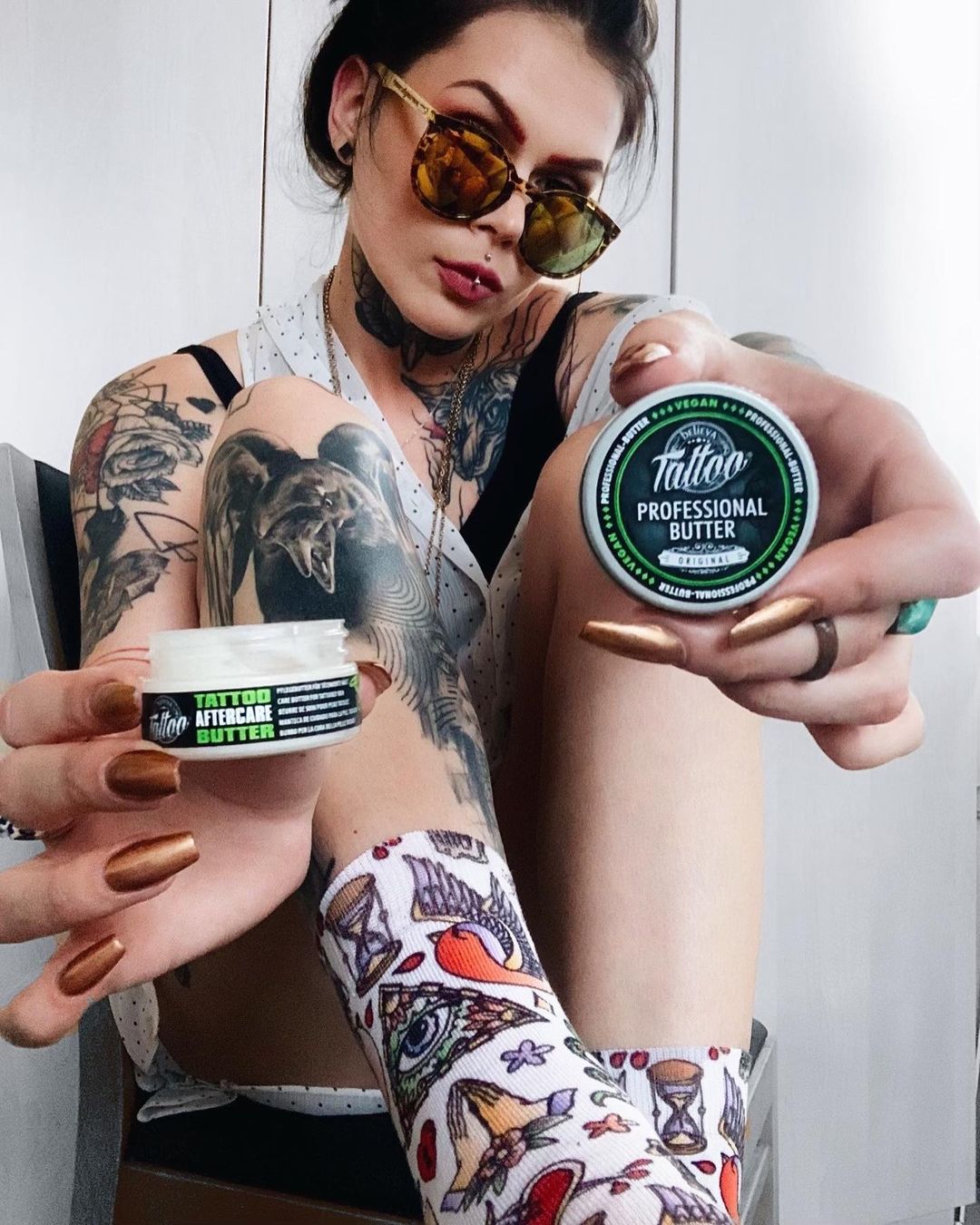
Applying antibiotic or recommended ointment is essential for the healing of a fresh tattoo. Most tattoo artists will recommend you use a particular brand of ointment they believe works best, often a lotion made with shea butter.
It is important you use fragrance-free and alcohol-free ointment or moisturizer, or you can even go for antibiotic ointments to prevent any sort of infection. The key is to choose gentle products that are low in chemicals, have a neutral pH, and aren’t astringent.
Regardless of your choice, however, you must at this point apply enough ointment to cover the tattooed area, but not overdo it. Applying too much can clog the pores and cause skin irritation or rashes; a thin layer is perfectly enough. Also, after you’ve applied the ointment, make sure not to re-cover the tattoo, so that the skin can breathe and absorb the ointment properly.
Note: don’t apply any oils at this stage of the healing process. There was a time when people were going crazy over coconut oil and applying it directly to tattoos. We advise that you avoid oils completely, as they are great for locking in moisture but don’t do a great job of providing it. When the tattoo is fully healed, certain body oils may be used. But let’s stick with moisturizer and ointment during the aftercare stages.
4. Wait For The Tattoo To Heal
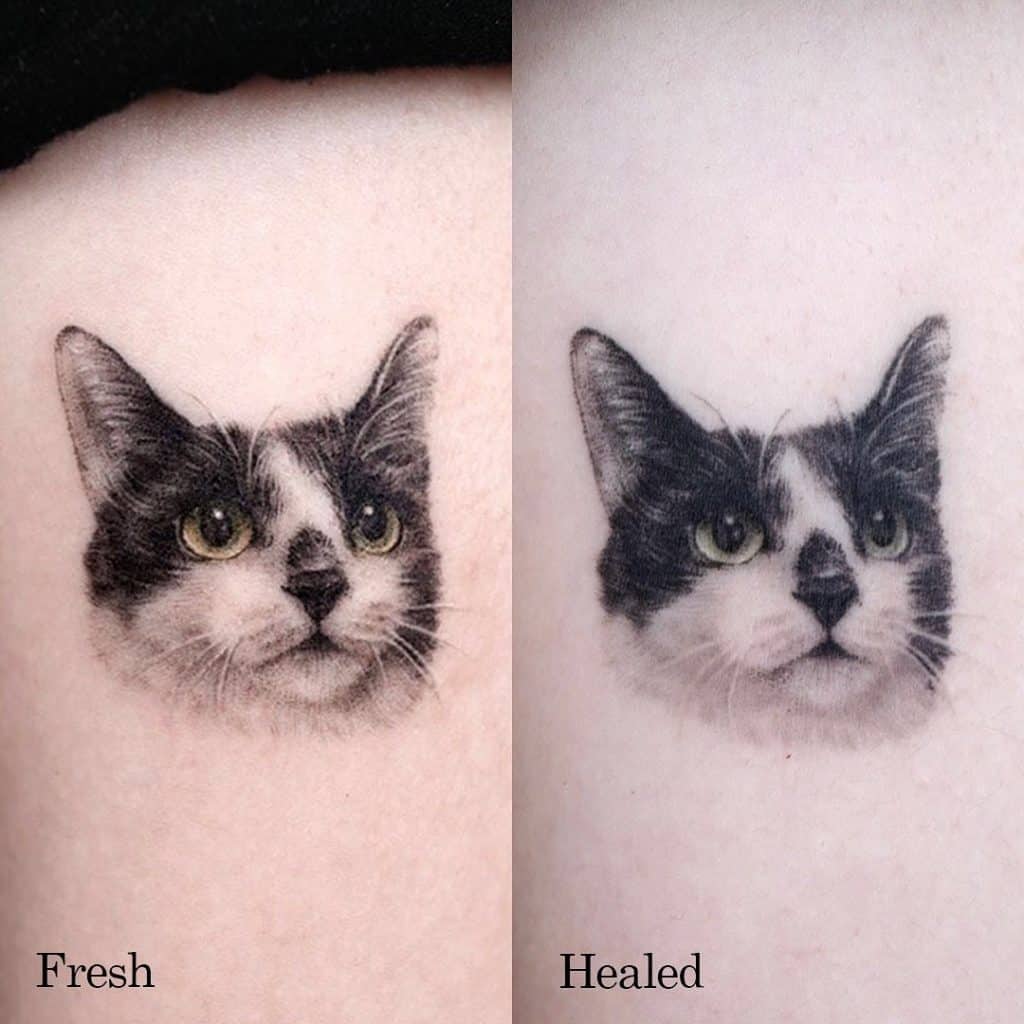
It may take your tattoo some time to heal, so it is essential you stay calm, take care of your tattoo, and let it heal completely. Many tattoo artists will let you know the estimated time you can expect your tattoo to heal, but the time usually revolves around 6 weeks, depending on the size and type of the tattoo.
For example, colored tattoos take longer to heal than black and white ones, or if there’s any trauma to the skin, you can also expect the healing process to take longer. This means that areas that have been heavily shaded or the tattoo artist has gone over repeatedly will take much longer to heal. As a result, certain tattoo styles heal quicker than others.
Heals relatively quickly:
- Linework,
- Minimalist designs,
- Stick and poke.
Takes much longer to heal:
- Hyper-realistic designs,
- Blackwork,
- Portraits and detailed designs,
- Any tattoo that requires a lot of coloring and shading.
You should also know that the tattoo will become itchy and uncomfortable, so you need to control yourself and not scratch it, or peel and pick it!
Read More: How Long Does It Take For A Tattoo To Heal: Step By Step Guide
My Tattoo Isn’t Healing Fast – What Should I Do?
If your tattoo is taking much longer to heal than your tattoo artist recommended, don’t panic. Everyone is a little different and the timescale for healing will vary from person to person. If you take a long while to heal in general from cuts, scrapes, and bruises, then your tattoo will take longer too.
The really important thing is to look out for infection. If your tattoo takes ages to heal, you’ll need to follow the aftercare steps of cleaning and moisturizing it for longer. The longer you have an open wound on your body, the higher the chances of it getting infected.
If in doubt, ask your tattoo artist or reach out to the tattoo forums!
Tips to Make Your Tattoo Heal Faster
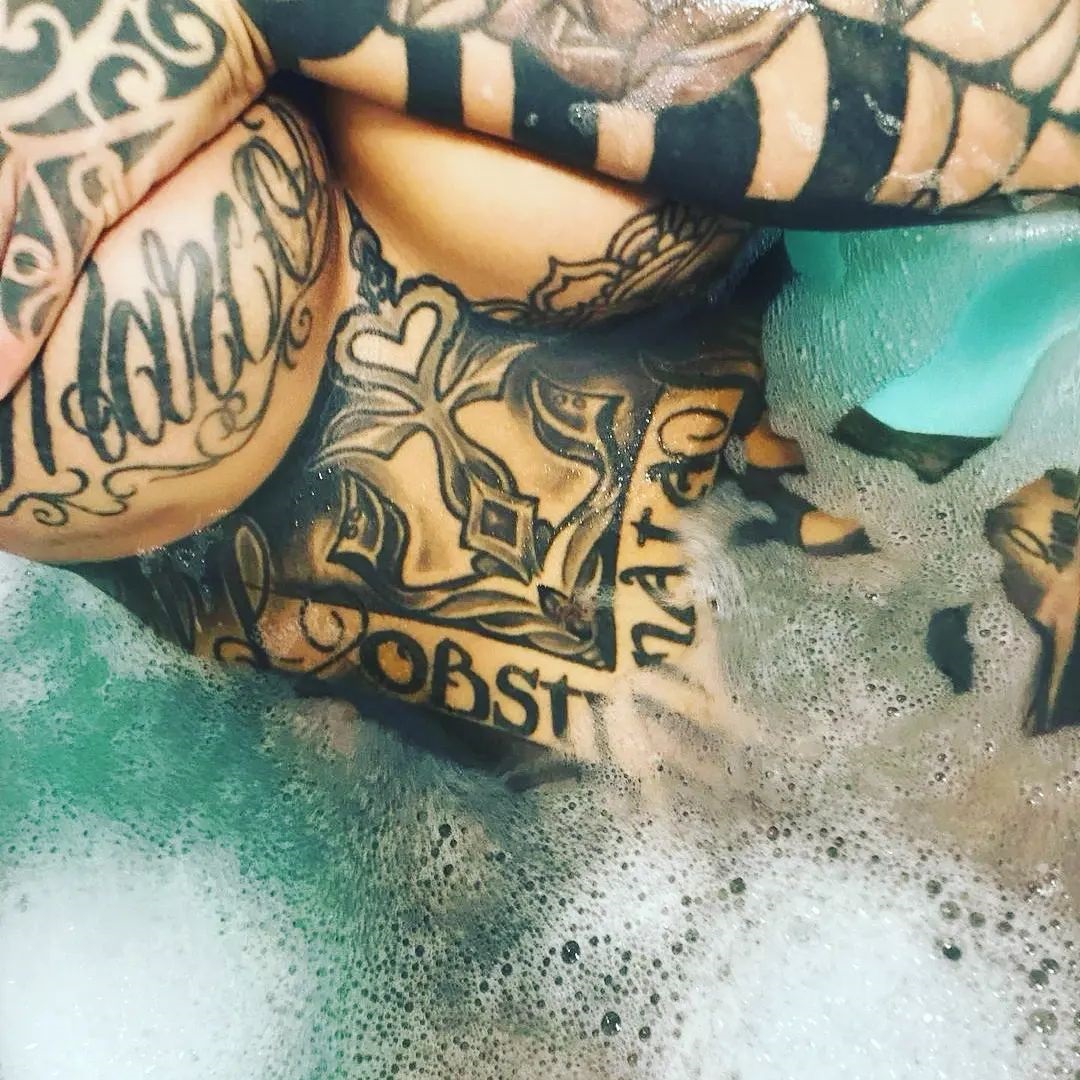
Here are some other tips to follow if you want your tattoo to heal fast. Just remember that even though you can speed up the process a little, you cannot skip any step. You just gotta go through it! If this is your first time getting a tattoo, take it slow and steady.
It’s best not to make plans, like a tropical vacation, shortly after getting your tattoo. You never know how long your body will take to heal! Even if you’ve had a tattoo before, changes to your body overtime as well as the placement of the tattoo can mean that this new ink will take more or less time to heal than the previous ink.
Things that can impact how quickly your tattoo heals includes how much water you drink, your diet, previous skin damage like sunburn, the weather and climate where you live, your age, any other wounds that you are healing, medical conditions, and the placement of the tattoo. With so many variables, it’s hard to predict exactly when your new ink will be completely healed by.
Tips to speed up tattoo healing and aftercare:
- Avoid prolonged exposure to the sun,
- Avoid working out or doing strenuous work,
- When exposed to the sun, make sure to wear sunscreen (SPF 35 or higher),
- Wear loose clothes over the tattoo,
- Apply a small amount of ointment or lotion; putting too much on can suffocate the skin and cause healing issues,
- Stay away from water and swimming pools (but you can take showers),
- Avoid covering the tattoo with sunblock until it’s healed,
- Call your tattoo artist or doctor in case you notice any irritation, infection symptoms, or any other health and skin issues!
Read More: How Long Does It Take for A Tattoo to Heal: Step by Step Guide
How to Shower with a New Tattoo
Even though you are washing your new tattoo separately and carefully, you’ll still need to wash the rest of your body! To do this, you can take a shower… but you must follow these steps.
- You don’t typically need to cover the tattoo, but you should avoid directing the water spray directly onto the tattoo. If possible, keep the water pressure as low as possible!
- Keep the water temperature low too. Lukewarm or cool water will be soothing on your tattoo. Furthermore, hot water and steam can open your pores, leading to more oozing and an infection.
- Shower as quickly as possible! Don’t linger and don’t let your tattoo soak for ages. Therefore, you should be avoiding baths too.
- Don’t dry your tattoo with your body towel. Instead, use your regular towel for your body, then use paper towel on your tattoo. You can discard of the paper towel afterward to avoid spreading bacteria and infection around.
6 Tattoo Aftercare Products We Swear By!
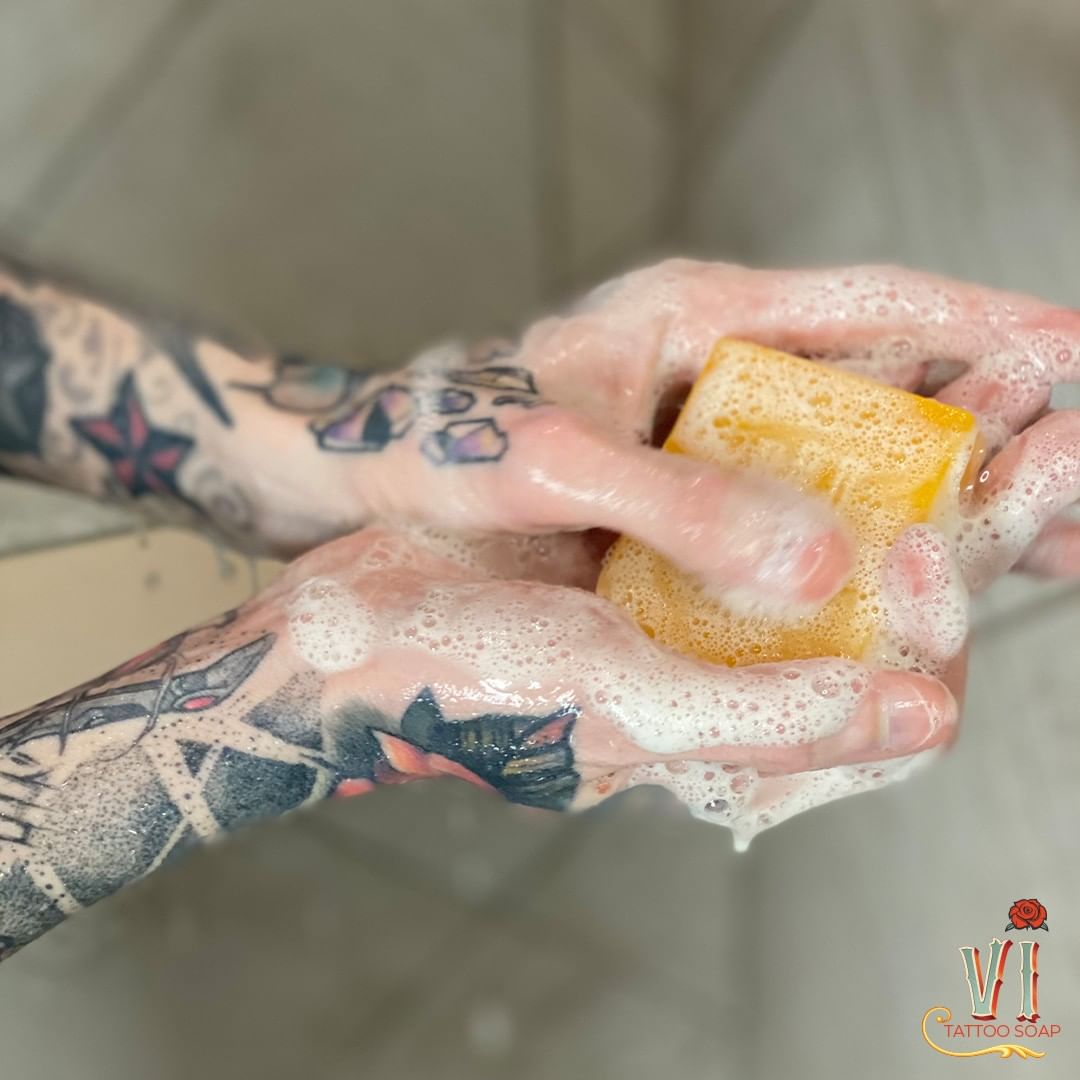
We asked our team of tattoo-addicts and professional tattoo artists which products they recommend. Below we’ve listed the 6 that they love the most! But before we get into that, here are some ingredients to look for and some to avoid:
Great ingredients:
- Shea butter
- Cocoa butter
- Glycerin
- Vitamin E
- Vitamin A
- Vitamin B5/Panthenol
- Oatmeal
Bad ingredients:
- Fragrances – real or artificial
- Excessive chemicals
- Rough or exfoliating ingredients, e.g., coffee grinds
- Excessively greasy or oily textures
Controversial ingredients:
- Petroleum – it forms a seal over your tattoo, preventing moisture from escaping… however, it can also clog your skin and keep it dry if the product isn’t balanced with enough moisturizing elements.
- Oils – similarly to petroleum, these lock in moisture rather than providing it. A small amount of natural oil, e.g., hemp seed, sesame, jojoba, may be okay when combined with other moisturizing elements.
- Multi-purpose products – some people have tried hemorrhoid cream, nappy rash cream, and antiseptic cream on their healing tattoos. While some of them may work, others contain ingredients that will be harmful to your tattoo. We think it’s best to avoid any product that wasn’t made with healing or inked skin in mind.
If your tattoo artist doesn’t recommend an aftercare product, it’s always best to use products that are specifically formulated to be applied on healing tattoos. This way, you can be sure that each product only contains safe ingredients and won’t damage your fresh ink in any way.
Tattoo Aftercare Soap
Dr. Bronner’s Pure Castile Soap – this anti-bacterial liquid soap is suitable for baby skin, or generally sensitive adult skin, which makes it perfect for tattoo cleansing since the tattooed area is highly sensitive and irritated. You can use this soap to wash your tattoo daily. Make sure to wash the tattoo with this soap and some lukewarm water and tap to dry using a soft cloth or paper towel.
The other great thing about this liquid soap is that you don’t need to lather it between your hands like a bar of soap. Once the lid is closed, the liquid soap inside the bottle is protected and therefore less likely to become contaminated.
Tattoo Aftercare Aquaphor (So Good!)
Aquaphor Healing Ointment – for the first few days after getting the tattoo, make sure to use this healing ointment. Tattoo artists recommend it widely because it provides the right amount of moisturization without preventing your skin from breathing or causing the skin to clog. This healing ointment does contain petroleum (Vaseline), so you only need to apply a thin layer.
While most people go crazy for Aquaphor products on tattoos, bear in mind that other tattoo artists do NOT recommend this gel, since it does contain Vaseline and will seal in the moisture. If you are on the fence about this one, don’t worry. Check out our best tattoo aftercare lotion next.
Best Tattoo Aftercare Lotion by Eucerin
Eucerin Intensive Repair Lotion – after a week, the tattooed area will start to form scabs and cause itching. The skin will become dry and flaky, but you must resist scratching it. This repair lotion is made for such cases; it mitigates the itching sensation caused by dry, flaky skin. It is recommended to apply it after washing the tattooed area. The lotion is moisturizing and keeps the skin hydrated and radiant.
We really love that it is a very light lotion, so it glides onto the tattoo easily. You don’t need to really push or apply pressure to spread the lotion, so it won’t catch on flake or pull at your skin.
A Tattoo Butter
Hustle Butter – this product is primarily made for tattoo aftercare, so you cannot go better than Hustle Butter. The cream is made from shea butter, an ingredient rich in antioxidants, vitamins, and fatty acids. The butter will moisturize and nourish the treated skin, and leave it smooth, hydrated, and protected. The butter is made to prevent itching and promote the healing process as well.
If you feel like lotions aren’t nourishing enough, then a shea butter will get the job done. In fact, a pure and natural shea butter may be the best product you can use if you are very sensitive to chemicals or have allergens. One study found that tattoo aftercare products contain an average of 7 allergens, so a natural product like shea butter is very beneficial.
Best Tattoo Aftercare Cream
Viking Revolution Tattoo Balm – this balm-like cream is one of the best all-round tattoo products. It can be applied before you get a tattoo, to ensure your skin is in the best condition, as well as during aftercare. They even recommend using it on old tattoos, to keep them from fading as much as possible.
We love this tattoo aftercare cream because it’s made with 100% natural and organic ingredients, plus it is totally against testing on animals. Perfect for vegans.
Tattoo Aftercare Ointment
CeraVe Healing Ointment – although this ointment contains petroleum, it is incredibly moisturizing, and the petroleum element is simply there to lock that moisture into your skin. The great thing about using this CeraVe ointment is that it’s specifically designed for irritated and healing skin. On many lotions and creams, the instructions state that it’s not suitable for broken or irritated skin, which means it cannot be used on your tattoo. This CeraVe product, however, is ideal for peeling and itching tattoos.
What To Do If Your Tattoo Gets Infected
If you think that your tattoo might be infected, then get yourself to a medical professional. Your original tattoo artist may be able to provide a recommendation, but they can’t solve the infection themselves. Furthermore, please don’t direct any anger at your tattoo artist! Unless there has been a string of customers with tattoo infections from a single parlor, it’s highly unlikely that the infection came from the tattoo shop itself. It’s far more likely that you picked up the infection at home.
Don’t be afraid to visit a doctor, nurse, or anyone else with medical training. While you may think that your scabby, oozy, smell tattoo is the worst thing on Earth, we can guarantee that they have seen worse!
In most cases, a course of antibiotics or a medical grade antibacterial cream will be prescribed to kick the infection. Unfortunately, this may damage or alter the tattoo design. Once the tattoo is fully healed, you can get a touch-up session to correct anything that went awry.
Summary
We hope this quick insight was helpful for those of you who just got a new tattoo or thinking about getting one. Aftercare is a long process, and it requires determination and a strong will not to pick and scratch the skin.
So, try to distract yourself during the healing process, and make sure to take care of the skin using proper moisturizers and ointments. Proper aftercare will mitigate all the uncomfortable aspects of tattoo healing, so it will surely help you and ensure the healing completes faster.
For more information, always make sure to talk to your tattoo artists, your doctor, or dermatologist.
Also Read:
- 5 Best Tanning Lotions for Tattoos: 2022 Summer Season Tanning Lotion Review
- What Not to Eat After Getting a Tattoo? – Diet Tips to Promote Faster Tattoo Healing
- Can You Fly After Getting a New Tattoo: Traveling with Fresh Ink
Tattoo Aftercare: 6 FAQs
Is the aftercare routine the same for all tattoos?
Short answer: no, the aftercare routine is NOT the same for all tattoos, and your tattoo artist should explain that thoroughly. The aftercare routine differs in regard to the tattoo style.
For example, simple unshaded linework tattoos don’t require as much aftercare as colored or portrait tattoos since they’re not as damaging to the skin.
Whatever style your tattoo is in, follow the cleaning and moisturizing steps listed above.
Which aftercare products should I use?
Your tattoo artist might recommend you use some particular moisturizers or ointment products to use as a part of your tattoo aftercare routine. If not, many tattoo artists recommend people use Aquaphor products.
Is it safe to use coconut oil for aftercare?
For a long time, people believed that coconut oil was a miracle skincare product that is affordable and highly effective. Many even went so far as to draw conclusions from the practices of indigenous people in terms of how they use coconut oil for their skincare.
However, even though there is some truth to such claims, others claim that using coconut oil for skincare (or tattoo aftercare) can cause clogging and other skin issues, like irritation or redness.
We have to say that all of this is currently anecdotal and not proven scientifically. Therefore, if you want to use coconut oil for your tattoo aftercare routine, make sure to talk to your doctor, a dermatologist, or your tattoo artist.
Can I use Vaseline for tattoo aftercare?
We believe it is best to avoid products like Vaseline since they are made from 100% petroleum. This ingredient doesn’t add much moisture, it just seals and clogs the skin. Furthermore, it can affect the tattoo itself and cause the ink to fade quickly.
Some tattoo artists recommend you apply a thin layer of Vaseline before taking a shower, to create a barrier between the water and the tattooed area. It’s almost like waterproofing the tattoo! Other tattoo aftercare products contain a very small amount of petroleum with other moisturizing ingredients, to lock that moisture in.
We also recommend you talk to your doctor or dermatologist before using petroleum-based products on your skin.
Is color tattoo aftercare different?
The healing process is the same, regardless of the ink color. What makes a difference, however, is the technique the ink was applied with. Areas that have been shaded or reworked multiple times by the tattoo artist will ooze more and take longer to heal.
Should I shower or bathe when my tattoo is healing?
During those first few days, you’ll be washing your tattoo twice daily with antibacterial soap. When you need to bathe the rest of your body, you’ll want to cover the tattoo with wrap. This prevents any dirt that you’re washing off your body getting onto the tattooed area.
If your tattoo is on your arm, you may be able to have a bath while keeping your arm out of the bath, completely dry. But in most cases, a shower is more appropriate. See tips above for showering with a fresh tattoo.
- Safe, non-toxic plant-based temporary tattoos made with 100% high-definition printing for a realistic look without the pain
- Easy to apply and remove - just stick for 20 seconds then take off
- Set includes 5 sheets with 17 fun, delicate designs like hearts, cats, smiles, suns, moons, and more
- Waterproof and long-lasting - stays on up to 2 weeks of wear
- Fashionable for women, men, girls and boys
- Place on arm, wrist, neck, leg, finger, waist, foot and more
- Great for parties, birthdays, and showing your unique style

